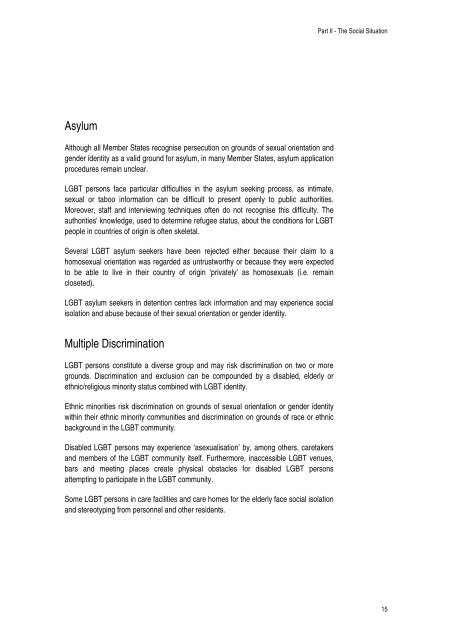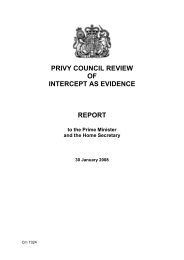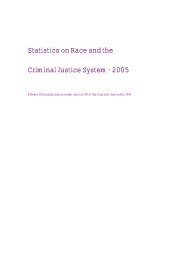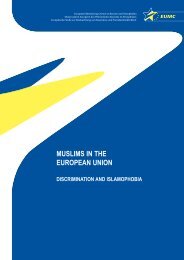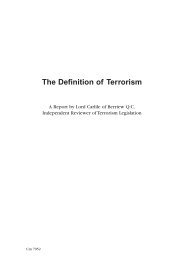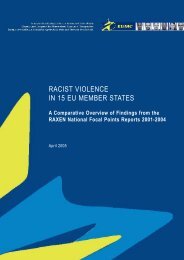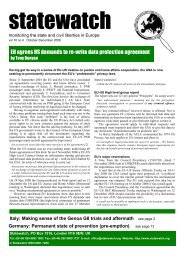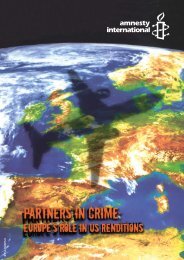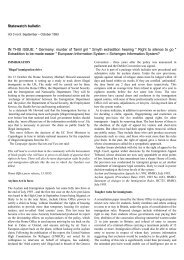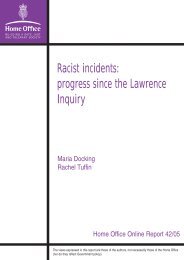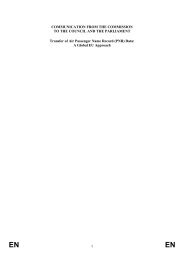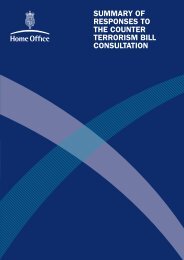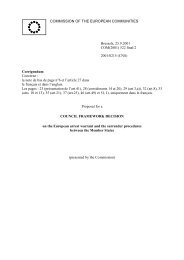Homophobia and Discrimination on
Homophobia and Discrimination on
Homophobia and Discrimination on
Create successful ePaper yourself
Turn your PDF publications into a flip-book with our unique Google optimized e-Paper software.
Asylum<br />
Although all Member States recognise persecuti<strong>on</strong> <strong>on</strong> grounds of sexual orientati<strong>on</strong> <str<strong>on</strong>g>and</str<strong>on</strong>g><br />
gender identity as a valid ground for asylum, in many Member States, asylum applicati<strong>on</strong><br />
procedures remain unclear.<br />
LGBT pers<strong>on</strong>s face particular difficulties in the asylum seeking process, as intimate,<br />
sexual or taboo informati<strong>on</strong> can be difficult to present openly to public authorities.<br />
Moreover, staff <str<strong>on</strong>g>and</str<strong>on</strong>g> interviewing techniques often do not recognise this difficulty. The<br />
authorities' knowledge, used to determine refugee status, about the c<strong>on</strong>diti<strong>on</strong>s for LGBT<br />
people in countries of origin is often skeletal.<br />
Several LGBT asylum seekers have been rejected either because their claim to a<br />
homosexual orientati<strong>on</strong> was regarded as untrustworthy or because they were expected<br />
to be able to live in their country of origin ‘privately’ as homosexuals (i.e. remain<br />
closeted).<br />
LGBT asylum seekers in detenti<strong>on</strong> centres lack informati<strong>on</strong> <str<strong>on</strong>g>and</str<strong>on</strong>g> may experience social<br />
isolati<strong>on</strong> <str<strong>on</strong>g>and</str<strong>on</strong>g> abuse because of their sexual orientati<strong>on</strong> or gender identity.<br />
Multiple <str<strong>on</strong>g>Discriminati<strong>on</strong></str<strong>on</strong>g><br />
LGBT pers<strong>on</strong>s c<strong>on</strong>stitute a diverse group <str<strong>on</strong>g>and</str<strong>on</strong>g> may risk discriminati<strong>on</strong> <strong>on</strong> two or more<br />
grounds. <str<strong>on</strong>g>Discriminati<strong>on</strong></str<strong>on</strong>g> <str<strong>on</strong>g>and</str<strong>on</strong>g> exclusi<strong>on</strong> can be compounded by a disabled, elderly or<br />
ethnic/religious minority status combined with LGBT identity.<br />
Ethnic minorities risk discriminati<strong>on</strong> <strong>on</strong> grounds of sexual orientati<strong>on</strong> or gender identity<br />
within their ethnic minority communities <str<strong>on</strong>g>and</str<strong>on</strong>g> discriminati<strong>on</strong> <strong>on</strong> grounds of race or ethnic<br />
background in the LGBT community.<br />
Disabled LGBT pers<strong>on</strong>s may experience ‘asexualisati<strong>on</strong>’ by, am<strong>on</strong>g others, caretakers<br />
<str<strong>on</strong>g>and</str<strong>on</strong>g> members of the LGBT community itself. Furthermore, inaccessible LGBT venues,<br />
bars <str<strong>on</strong>g>and</str<strong>on</strong>g> meeting places create physical obstacles for disabled LGBT pers<strong>on</strong>s<br />
attempting to participate in the LGBT community.<br />
Some LGBT pers<strong>on</strong>s in care facilities <str<strong>on</strong>g>and</str<strong>on</strong>g> care homes for the elderly face social isolati<strong>on</strong><br />
<str<strong>on</strong>g>and</str<strong>on</strong>g> stereotyping from pers<strong>on</strong>nel <str<strong>on</strong>g>and</str<strong>on</strong>g> other residents.<br />
Part II - The Social Situati<strong>on</strong><br />
15


